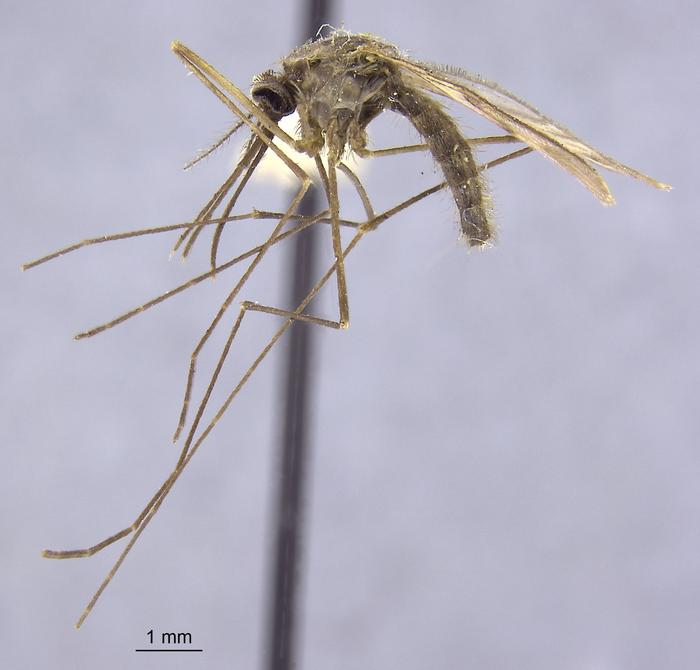Assessing the Extinction Risk of Tree Species in Mexico and Central America
In a groundbreaking study recently published in the journal Plants, People, Planet, researchers have revealed alarming new details about the conservation status of trees in the biologically rich region of Mesoamerica, encompassing Mexico and Central America. This region is home to over 4,000 tree species found nowhere else on Earth, highlighting its critical role in […]


In a groundbreaking study recently published in the journal Plants, People, Planet, researchers have revealed alarming new details about the conservation status of trees in the biologically rich region of Mesoamerica, encompassing Mexico and Central America. This region is home to over 4,000 tree species found nowhere else on Earth, highlighting its critical role in global biodiversity. The comprehensive assessment, conducted as part of the Global Tree Assessment initiative, has found that nearly half of these unique tree species are currently threatened with extinction, a staggering figure that calls for urgent conservation action.
The Global Tree Assessment is a monumental effort led by an international consortium aiming to evaluate the extinction risk faced by all tree species worldwide. Employing the rigorous methodology developed by the International Union for Conservation of Nature (IUCN) Red List, the researchers systematically compiled data on species’ geographical ranges, habitat preferences, population trends, threats, and existing conservation measures. Such data-driven analysis enables conservationists and policymakers to prioritize actions most critical to preventing species loss at both national and regional levels.
One of the study’s most concerning revelations is that 46% of Mesoamerican tree species are categorized as threatened, including those at critical levels such as “Endangered” and “Critically Endangered.” This high rate of threat is particularly unprecedented given the region’s status as a global biodiversity hotspot. The extensive destruction of forest habitats driven primarily by agricultural expansion and unsustainable logging practices were identified as the leading causes behind this decline. The widespread conversion of forests into farmland not only erodes tree populations but also fragments ecosystems, thereby amplifying the vulnerability of these species.
.adsslot_hwvOW5ZVPi{ width:728px !important; height:90px !important; }
@media (max-width:1199px) { .adsslot_hwvOW5ZVPi{ width:468px !important; height:60px !important; } }
@media (max-width:767px) { .adsslot_hwvOW5ZVPi{ width:320px !important; height:50px !important; } }
ADVERTISEMENT
Moreover, the investigation uncovered a significant gap in targeted conservation efforts. Despite the recognized threats, most endangered tree species lack specific conservation programs tailored to their ecological needs, which exacerbates their extinction risk. This lacuna highlights the urgent necessity of translating scientific knowledge into actionable protection strategies that address the root causes of tree decline, including habitat restoration, sustainable forestry practices, and the enforcement of legal protections.
The study’s coordinating author, Emily Beech of Botanic Gardens Conservation International in the UK, emphasized the transformative potential of the assessment. By providing country-specific data on which species are most at risk, the nature of threats they face, and the conservation measures currently in place, the research equips government agencies, conservation NGOs, and local communities with precision tools to implement effective strategies. This granular understanding aids in allocating limited resources to the most critical priorities, thereby maximizing conservation impact.
Technically, the assessment benefited from integrative data collection combining geographic information system (GIS) mapping with field survey inputs and herbarium records. This multifaceted approach enhanced the accuracy of species distribution models and allowed the researchers to detect patterns of decline that may not have been evident from isolated datasets. Such comprehensive datasets can inform predictive models that forecast future population trajectories under various land-use and climate change scenarios, thereby facilitating dynamic conservation planning.
Additionally, the research examined the ecological roles of threatened tree species within their habitats, recognizing that losing these trees could have cascading effects on ecosystem functions such as carbon sequestration, soil stabilization, and support for wildlife. The implications extend beyond biodiversity loss to ecosystem services that directly influence human well-being, particularly for indigenous and rural communities reliant on forest resources for food, medicine, and livelihood.
The importance of this research lies not only in documenting biodiversity crises but also in highlighting the intertwined challenges of economic development and environmental stewardship. Agriculture, a vital economic activity in Mesoamerica, must increasingly incorporate sustainable practices that minimize forest clearance and promote agroforestry systems that integrate native tree species. Similarly, the timber industry is called upon to adopt sustainable harvesting protocols and invest in reforestation initiatives.
Policy frameworks at the national and international levels will need to be fortified in light of these findings. Enhanced cross-border collaboration is imperative since tree species often span political boundaries and their conservation requires coordinated action across countries. International support, both technical and financial, will play a crucial role in empowering local conservation programs and elevating the region’s protected area networks.
The study also serves as a poignant reminder of the accelerating global loss of plant biodiversity, which despite being less visible than animal extinctions, is equally urgent. Trees, as keystone organisms, underpin terrestrial ecosystems globally, and their preservation is essential for maintaining ecological resilience in the face of climate change. This research thus contributes valuable knowledge to the broader scientific discourse on biodiversity loss and climate adaptation strategies.
With this comprehensive Red List assessment now available, the researchers express hope that it will catalyze intensified efforts to safeguard Mesoamerica’s unique arboreal heritage before it is irreversibly diminished. By prioritizing conservation of threatened tree species through science-led policies and community engagement, the prospects for preserving these essential components of Earth’s natural heritage can be significantly improved.
Subject of Research: Conservation status assessment of tree species in Mesoamerica
Article Title: Comprehensive tree assessments for prioritising conservation action in Mesoamerica
News Publication Date: 18-Jun-2025
Web References: https://nph.onlinelibrary.wiley.com/journal/25722611, http://dx.doi.org/10.1002/ppp3.70045
Keywords: Trees, Extinction, Biodiversity conservation, Applied ecology, Environmental impact assessments, Natural resources, Natural resources management
Tags: biodiversity in Mexico and Central Americaconservation measures for endangered treesconservation status of Mesoamerican treesextinction risk of tree speciesGlobal Tree Assessment initiativehabitat preferences of tree speciesinternational consortium for tree conservationIUCN Red List methodologypopulation trends of tree speciesthreatened tree species in Mesoamericaunique tree species in Mexicourgent conservation action for trees
What's Your Reaction?

































